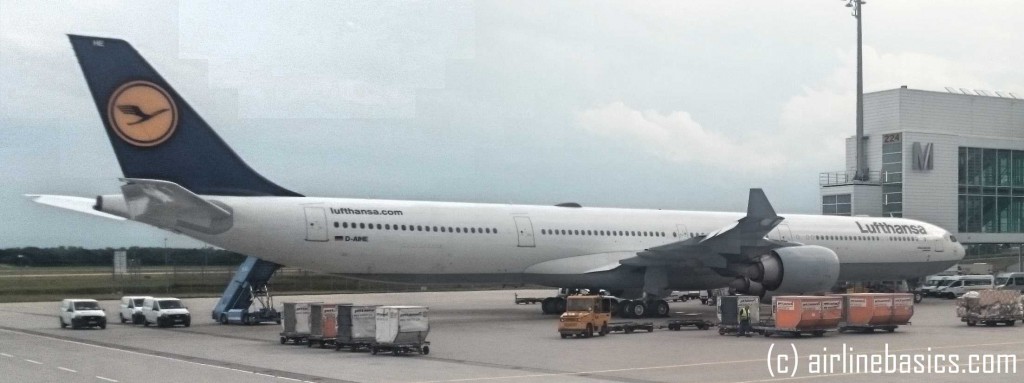No-one needs to be told that airlines are tremendous cost generators and if nothing else, watching closely airline costs is probably the most important thing to do throughout the entire operating life of an airline. I will take a brief look at major cost factors associated with running an airline.

I have briefly touched upon airline costs in the “Airline Business Plan” post, where I outlined the main costs which should be, as a minimum, included in a basic business plan profit calculation. Here I intend to take a closer look at airline costs, including those which seem unpredictable (but in fact aren’t, although we’ll get to that later). This post will not deal with every airline cost factor which you may encounter throughout your experience in airline management. Rather, I would like to point you to some of the obvious but big ones as well as those which may come as unexpected.
Fuel costs
This is very obvious. To fly you need fuel and we all know that fuel prices are high, be it only from our experience at the local gas station. Fuel is one of the major airline costs and there is really no way to avoid it. And if you can’t avoid you just have to learn to live with it.
Fuel prices change over time, both up and down. This means that generally, there are times during which you can save the money you will later spend on a fuel price increase. Also, when you budget your airline costs, be sure to add approximately 10% to the fuel price you expect (this is of course if you don’t have any professional advice on the fuel price trends in the future).
Some airlines have tried hedging to reduce the fuel related airline costs. Hedging for fuel is a process in which you buy a large quantity of fuel when, in your opinion, the price is low and keep it somewhere at your own costs. This allows for the cheap fuel to be still used when prices go up. You repeat the process when the prices come down again (assuming they eventually will).
This approach has a few drawbacks, however. First of all, you need a lot of cash. Most airlines, especially smaller ones, are extremely cash flow sensitive, which means that they generally don’t have too much spare cash floating around, even if business is going well. And if the cash is there, you’re still facing the risk of buying on a peak rather than in a low. I know a few airlines which have hedged fuel during its largest peak ever a few years ago. They did that because fuel prices were increasing dramatically and many experts believed that the trend would continue. It didn’t, the prices fell and those airlines lost a lot of money. So careful with that. Better to properly plan ahead than take that particular risk unless you’re really well educated on the trends of fuel prices.
Maintenance
I can’t stress this point enough to airline people I meet. Maintenance is a huge factor in airline costs. For certain types of aircraft ad certain operations it gets close to fuel costs, and this means quite a lot. Here are the main factors affecting maintenance airline costs:
- Costs of spare parts
- Costs of engine, propeller (if applicable), APU (if applicable) and landing gear overhauls
- Costs of monthly maintenance reserves if the aircraft are leased in
- Cost of scheduled maintenance
- Cost of unscheduled maintenance (fixing all sorts of failures on the aircraft) – determining those takes quite a bit of insight into the statistics of how a given aircraft type is performing
- Fixed costs of keeping the maintenance facilities, manpower and a set of spares (assuming you do your maintenance in-house)
- Costs associated with aircraft being grounded due to technical reasons
The last of those airline costs is not really a maintenance cost per say, but I did put it down here because it depends on an aircraft technical status. Furthermore, those costs can be quite significant with having to provide passengers with an alternative means of transport and possibly leasing out an ACMI aircraft.
Airline costs related to maintenance are not only very significant, but they are also quite difficult to forecast properly. There are really two things that need to be considered: keeping steady track of statistical data regarding the performance of all aircraft in a fleet (and using the data of others if available) and saving up a given amount of money per flight hour or flight cycle for the purpose of scheduled or unscheduled maintenance. This is because an unscheduled event may cause a small airline to loose cash flow virtually overnight. It has happened.
Operating costs
Operating costs are, of course, another major factor in airline costs. They are divided into two categories: fixed operating costs and direct operating costs (DOC). The latter depend strictly on the chosen route (and aircraft type) and are encountered only when an actual operation is being performed. Therefore, they are the “good” costs because if they appear – you’re actually flying!
We’ll start quickly with the fixed operating airline costs which remain steady regardless of whether you fly or not. These include, but are certainly not limited to:
- Costs of air crew – this includes the cost per hour of flight of each crew member and also the need to keep generally more than one crew available per aircraft. The so-called crew index (the ration of the number of available crews to the number of available aircraft) is generally set somewhere between 2,5 and 4 depending on your specific airline operations. Whatever your crew index, you will always have to pay for crews who are not currently flying.
- Costs of flight crew and cabin crew training – although today many airlines choose very different approaches to those airline costs (with some of them leaving the training costs entirely to the crew themselves) in general this would be a fixed cost. Pilots and cabin crew require recurrent training, and the costs of such training are quite significant (especially for the flight crew).
- Costs of flight planning and flight dispatch – this is another one of the fixed airline costs which one cannot get around. Flight dispatch needs to be operating 24/7 (unless you have a very specific schedule and never, ever fly within a given time frame – this is rather rare) and it’s not cheap as the dispatchers need to be available for shift work and they require special software and skills to properly do their job.
- General office costs for the OPS department – there is quite a bit of paperwork associated with running and OPS department together with things like crew rostering, so there is a lot to do and this, of course, generates even more airline costs.
When it comes to DOCs, they include:
- Landing fees
- Terminal fees and navigational fees
- Other expenses such as deicing, aircraft cleaning
- All aircraft handling expenses
- Passenger handling at the airport (check-in and the like)
The DOCs account for a significant amount of the airline costs but they are dependent upon the number and type of operation and as such are easier to take into account – once calculated they need to be included in the appropriate air fare to assure that appropriate income will cover them.
Sales and distribution costs
An important factor in the overall definition of airline costs are sales and distribution costs which are caused mainly by the ticketing system and provisions paid to travel agencies or other intermediaries who sell your tickets.
Apart from that, an airline will generally need to have a call center, often operating 24/7 for passenger convenience. Apart from selling tickets and providing general assistance, the call center will also answer any claims, so it is crucial for customer service to have it running properly.
Last but not least, there are marketing costs which lead to the establishment of a price which the airline pays for obtaining one passenger by means of different advertising methods.
This was a very basic description of only the few main airline costs out there. Some have a bigger impact than others, but they all need to be accounted for as an airlines cash flow is generally stressed to the limits and even minor mistakes in cost calculations can lead to insolvency.


Leave a Reply